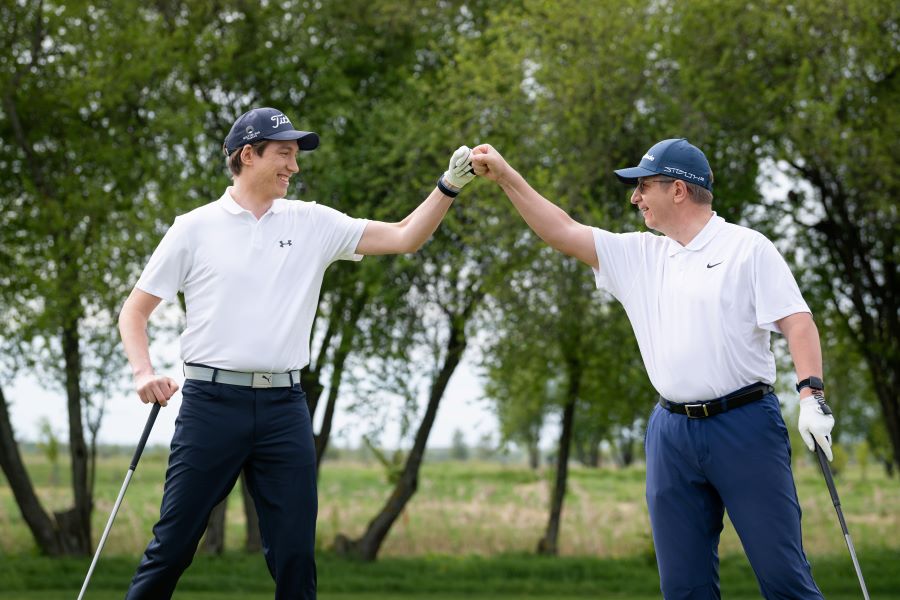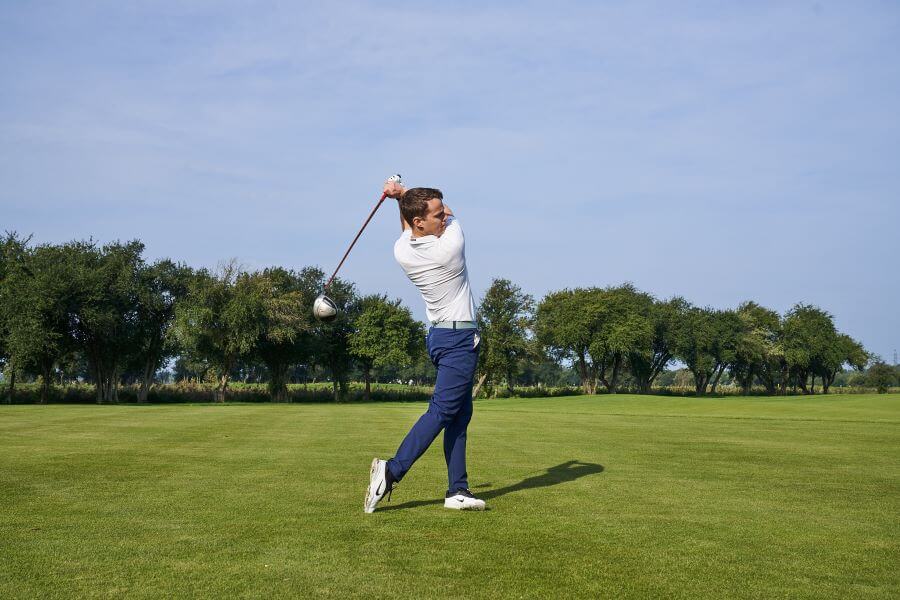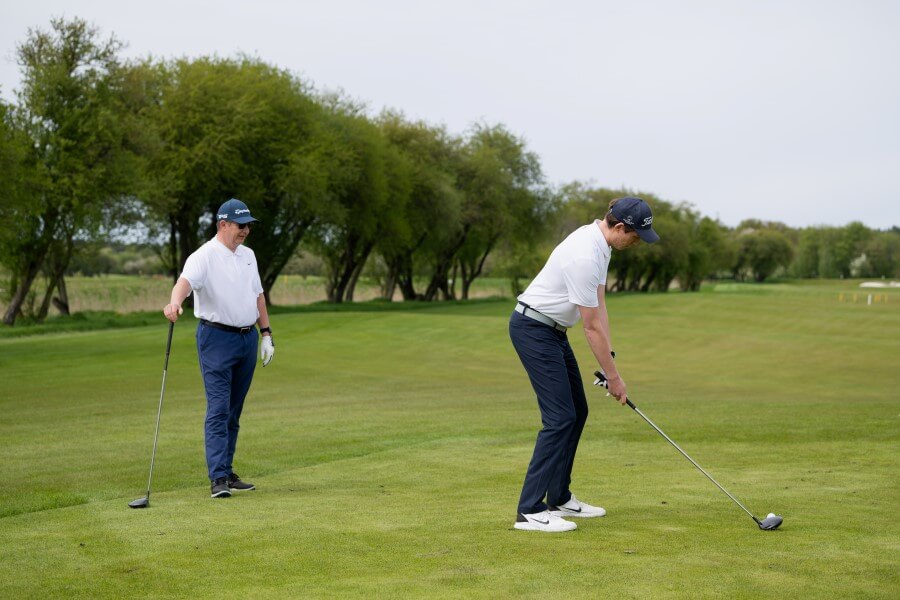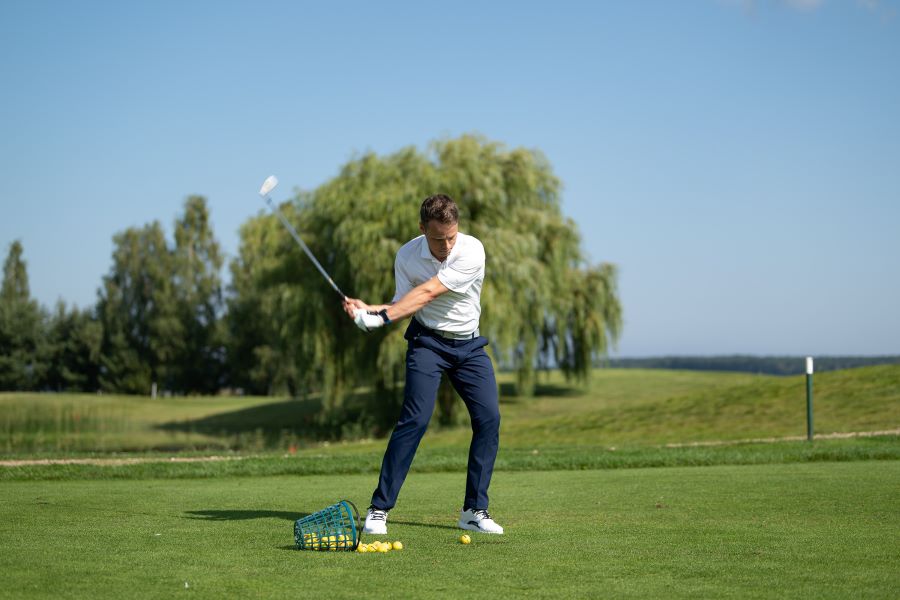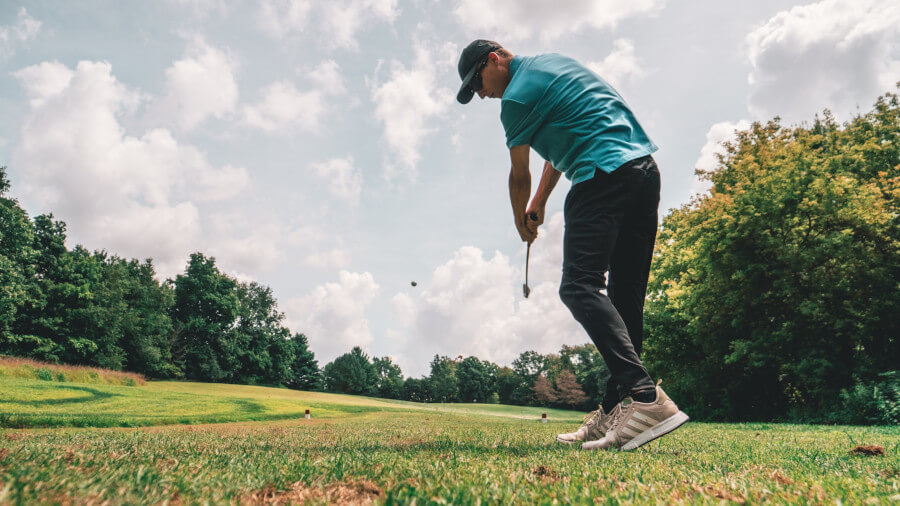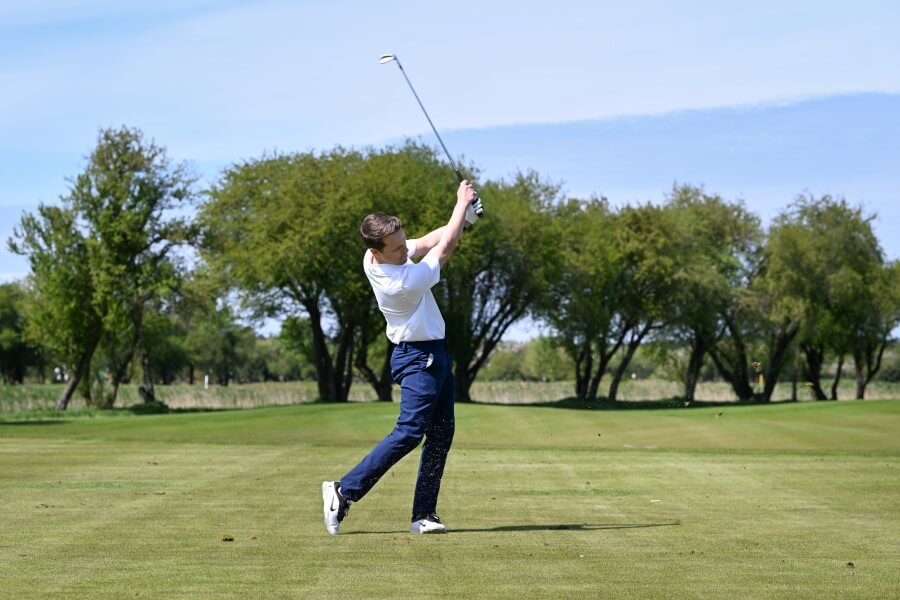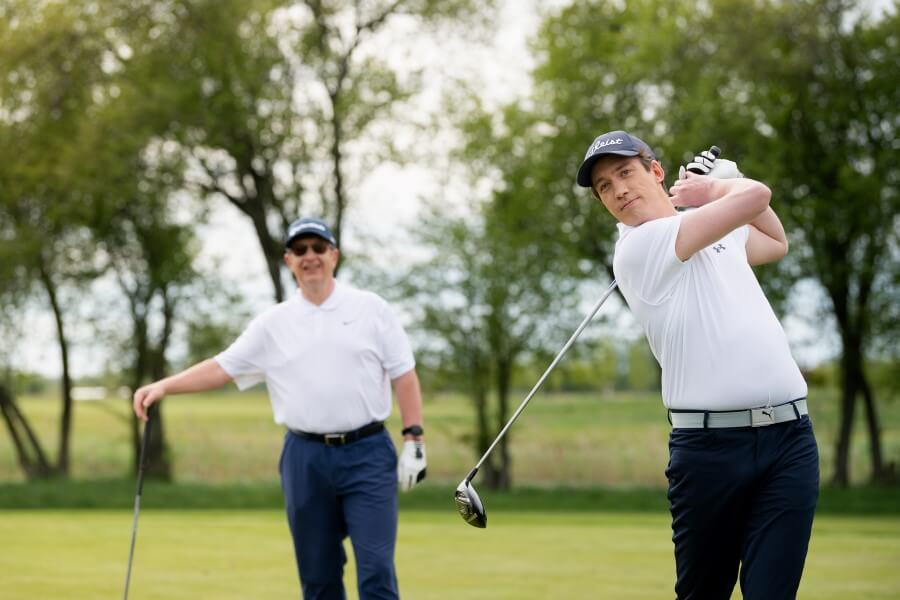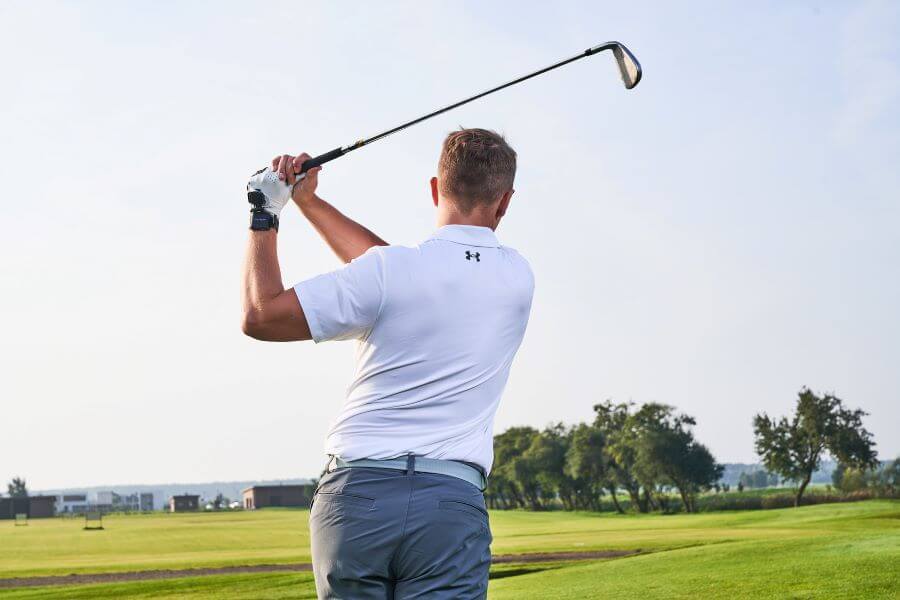How to Hit a Driver Consistently for More Fairways in Regulation
Learning how to hit a driver isn’t necessarily the hardest thing in golf to do. However, doing it consistently could be.
Things like posture, wrist extension, grip pressure and incorrect shaft flex could be the root problem of your driver issues.
Some golfers are so worried about the driver they keep it in their bag. Don’t do this as it ends up costing you distance and strokes.
After reading our best tips for how to hit a driver consistently for more fairways in regulation, you’ll have all the information you need to start playing each round of golf from the center of the fairway. Most importantly, you’ll have confidence in your driver.
Ways to Hit a Driver Consistently (Key Takeaways)
If you need to bookmark this post and read it the next time you are on the driving range, here are a few key pieces of information to take with you right now. To hit a driver consistently:
- Turn your feet outwards a little to increase backswing rotation.
- The hands can’t get behind the clubhead, forward shaft lean exists in the driver swing too.
- Reduce grip pressure for better wrist action and clubface control.
- Keep the ball lined up with your front heel at setup.
- Adjust the tee height to match your attack angle.
- Keep your lead wrist flat at the top of the swing to help shallow the shaft.
- Rotate your hips as the first move down from the top of the backswing.
- Get a good shoulder turn right from the start and keep it going through impact.
Prefer watching to reading? Check out this video recap on how to consistently hit your driver and improve your distance.
Contents
- 10 Actionable Tips to Hit a Driver Consistently
- 1. Adjust Your Tee Height
- 2. Don’t Let the Clubhead Get In Front of the Hands
- 3. Stand a Little Taller
- 4. Turn Your Feet Out (Trail Foot to Optimize Rotation on the Backswing)
- 5. Reduce Grip Pressure
- 6. Ball Aligned with Front Heel
- 7. Shorten Your Backswing
- 8. Move Wrist Towards Flexion at the Top
- 9. Shift Hips to Initiate Downswing
- 10. Rotate Your Shoulders Through Impact
- Common Causes of Hitting a Driver Inconsistently
- Summary
10 Actionable Tips to Hit a Driver Consistently
There are numerous reasons why you may not hit a driver consistently. These include everything from poor posture, limited hip turn, and lack of rotation in the shoulders.
However, what’s more important than these causes – are the solutions.
Here are 10 tips to hit a driver consistently that will benefit any golfer.
1. Adjust Your Tee Height
The first step to hitting your driver consistently is to tee your ball up to the ideal height for your angle of attack.
You must strike the ball slightly above the center of the clubface to generate a high launch angle and low spin rate. Most amateurs are afraid to tee it too high, and they think that this lower ball flight and launch give them more distance.
This isn’t true. Learn to get the ball up a little higher and you’ll hit it closer to the center of the clubface at impact.
When you tee the ball a little higher, you almost have to shallow your angle of attack, allowing you to catch the sweet spot and improve distance and control.
2. Don’t Let the Clubhead Get In Front of the Hands
If you are a good ball striker with your irons and wedges, you have your hands ahead of the ball with some forward shaft lean at impact.
The driver tends to confuse golfers because they feel like this forward shaft lean is a negative in the driver swing.
As you’ll see in this video from Rob Cheney below, the hands still need to be in line with the ball to get the correct impact position.
You’ll be catching the golf ball as part of your upswing, but if the clubhead moves ahead of the hands, you increase the extension of your lead wrist and cause inconsistency in the shots.
Work on keeping your head behind the ball and ensuring your lead wrist stays straight in line with the clubhead, not behind it.
3. Stand a Little Taller
Next you will want to make sure your spine and knee flex is correct. The mistake we see many golfers get into is too much spine tilt forward.
The driver is longer and standing a bit more upright can help you get longer and straighter shots.
From the upright position, bend your spine slightly forward and flex your knees until you feel comfortable and balanced. The weight should center itself at this point. Next, approach the ball and attempt to replicate this position.
The driver posture is a little different than the iron posture, and you have to be able to make this adjustment.
4. Turn Your Feet Out (Trail Foot to Optimize Rotation on the Backswing)
If you have limited movement in your lower body, turn both feet out just a quarter turn. You can get a little better rotation without feeling restricted at the top of the swing.
Generating maximum energy of your backswing is vital to accelerate clubhead speed and power into impact.
If you lose power before you reach the top of your backswing, you have nothing to unload on the way down, resulting in a slower swing speed and a loss of distance.
Leading European PGA instructor Rob Cheney highlights how to turn your feet outwards if you require a visual demonstration.
5. Reduce Grip Pressure
It’s almost natural to grip the club tight and try to rip it.
The problem is, it doesn’t work. Tight grip pressure restricts your control because it tenses your shoulders and arms and minimizes your ability to guide the club on plane.
The lack of shoulder turn on the backswing hampers your ability to get your hands and club head to the desired position at the top.
Find your optimal grip pressure. It doesn’t need to be loose; it just needs to ensure the club can rotate properly through impact. Try a few swings with what feels like excessively light grip pressure, and then switch it to excessively tight and find that middle ground.
6. Ball Aligned with Front Heel
Once your fundamentals check out, address the ball and set up for your shot.
Align the ball with the inside of your front heel to account for the added length of your driver shaft.
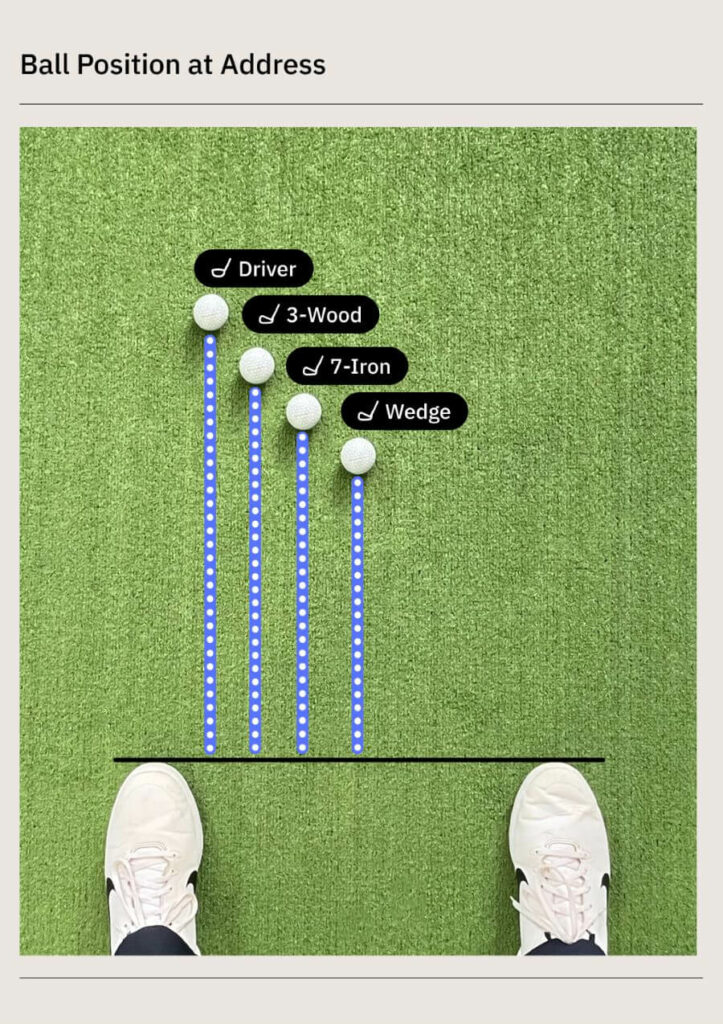
In addition, the forward ball position encourages you to strike the golf ball on the upswing, sweeping it into the air.
If the ball is too far back in the stance, you will hit down on the golf ball, which will result in yardage loss and sometimes even a slice. If the golf ball is teed up past your front foot, you’ll have to reach for it and risk topping it.
7. Shorten Your Backswing
Shortening your backswing can help you get your driver on a better plane and path. However, a shortened backswing does not mean a reduced shoulder or hip turn.
You still need the body to do its job; just don’t let the arms, hands, and wrists take the club further back than it should be going.
Wrist extension and open clubface typically ensue when a golf club swings too far back. From this position at the top, you’ll be playing catch up to get the clubface square.
I feel like I take my clubhead ¾ of the way back and delay taking it inside.
This enhances my control of the clubface and helps me get it as far from the impact zone as possible.
Once my clubhead reaches the 3 ? 4 mark, I initiate my downswing and let the club fall into place as I shallow it, leading into impact.
Here’s a fair warning: you may lose a little distance off the tee by switching to this shorter backswing, but you should find more fairways.
8. Move Wrist Towards Flexion at the Top
Added extension at the top of the backswing can cause the driver clubface to end up open at impact. The result is a slice or fade that won’t end up near the target.
If wrist movement is your problem, the HackMotion wrist sensor is the solution.
The HackMotion will train your wrist position to be more flat at the top of the backswing. From this flat or slightly flexed position, the only move into the ball is one of pure speed.
If you need a simple drill to help you gain more flexion in your backswing with the driver, try this.
- Hold your hand out in front of you with your palm facing the ground.
- Push your fingers down towards the earth to flex your wrists.
- Then, turn your hand clockwise until your palm faces the intended target ahead of you.
Notice how your palm is closed to the target, which is the optimal position you want leading into impact.
Conversely, when you hold your hand out in front of you and raise your fingers to the sky, you’ve created a wrist extension. If you leave your wrists extended into impact, you’ll keep the clubface open and possibly slice your golf ball.
9. Shift Hips to Initiate Downswing
Many golfers are curious about how to start their downswing to get consistent drives.
When you reach the top of your backswing, you should feel more weight on your trail side, which is where you store your energy to unleash on the downswing.
From the top of the swing, you need to start shifting your weight towards the front leg. This creates forward momentum that in turn, causes your shoulders to rotate.
The result is maximized power, lag, and control of the clubface.
Instead of initiating the transition with the hips, many players rely heavily on their arms and shoulders to get the club down to the golf ball. When your swing is all about the arms, you lose power.
10. Rotate Your Shoulders Through Impact
Finally, rotating your shoulders through contact is vital for your clubhead speed, power, and accuracy off the tee.
Ultimately, you will make cleaner contact with the ball and increase yardage by ensuring your shoulders keep turning. If you stop at the ball or forget to turn the shoulders to begin with, expect a loss of swing speed, power, and control of the clubface.
The next time you take a driver practice swing, pay attention to where your shoulders are at impact. If you find them open to the target, increase your turn rate to square them up at contact.
At the end of your swing, make sure you have fully rotated your shoulders so you are facing the target.
Common Causes of Hitting a Driver Inconsistently
There are a number of common causes for golfers to deliver inconsistent driver swings. Go through this checklist and see if any of them stand out and could be the cause of your inconsistency on the course.
- Incorrect Equipment: a driver loft that is too strong or a shaft that is too stiff.
- Bad posture: standing too upright or having the upper back hunched will force the club from swinging on the proper plane.
- Lack of Rotation: if you aren’t turning back with your body and arms, you won’t have nearly enough power or stability to hit consistent drives.
- Extension of the Lead Wrist in the Backswing: too much extension in the lead wrist, as opposed to a flat or flexed position, will cause erratic drives, especially slices.
- Relying Too Heavily on the Arms: the arms and wrists can help generate power but they can’t be the sole source of power in the swing.
- Not Enough Width in the Swing: the driver is long, keep the backswing wide so you can maximize power and torque, no need for a wrist hinge during the takeaway.
Summary
A driver is the longest and largest golf club in our bag. Despite its added surface area, it’s challenging to control.
Adjusting your tee height, standing moderately upright, and promoting maximum rotation is a perfect starting point for learning how to hit a driver more consistently.
In addition, remember to keep your ball aligned with the inside of your front heel and minimize wrist extension towards the top.
Optimizing your wrist angles using the HackMotion swing analyzer will help you control the clubface to generate superior accuracy and consistent distance off the tee box.





